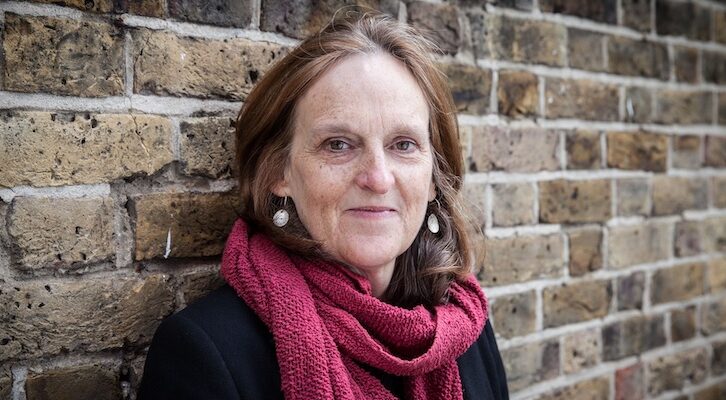
Tessa Hadley on the Unapologetic Joys of Rereading
The Author of After the Funeral and Other Stories Answers the Lit Hub Questionnaire
After the Funeral and Other Stories by Tessa Hadley is available now from Knopf.
*
What was the first book you fell in love with?
We must have borrowed this from the local library—which was my place of worship in my childhood, with its hush and its rituals, its high church-like windows, its presiding priestesses. The book was about the Small family: Papa and Mama Small and the Small Smalls. All I could remember was that its pages enchanted me, charged with the mystery of the Smalls’ daily lives, and that the pictures were in black and white and blue.
Recently I described this first book-memory to someone who then traced it for me: it’s an American classic from the ’50s by Lois Lenski. So now I own a copy—how strange it was to turn those pages in my grown-up present, sixty years on, remembering them and not remembering at the same time. Mama cooks and does housework while Papa goes out to work, needless to say. That was then. But it definitely started something. Ever since I’ve preferred domestic realism to fairytales.
Which book(s) do you reread?
All of my favorites. Just now, Ford Madox Ford’s Parade’s End. I’m rereading all the time, doing much more of that these days than reading new things. I suppose there’s a kind of laziness in choosing a book you know you love, instead of taking a chance of something unknown. But I refuse to be ashamed of it—I’ve always known that you should read exactly what you want, never impose reading on yourself as a duty. It’s only for joy.
The wonderful thing about the novel form is that it’s long and capacious by its very nature: so that when you go back to that novel which you’ve read so many times that you’re sure you know it by heart, you discover that you’ve managed to forget most of it. So rereading feels as fresh in fact as reading for the first time. Or fresher, because you’re not turning the pages to find out what happens, you’re dwelling in the sentences which bring the happening about.
Which non-literary piece of culture—film, tv show, painting, song—could you not imagine your life without?
I think, I think it’s film—but the moment I say that then I’m sure it’s painting. Both these things bring me such innocent inexpert satisfactions. I’m never aware of camera angles or technique, I simply succumb to the spell of the film or the picture.
A few hours in a gallery with Titian or Rubens or Poussin, or in the dark in a cinema with Kore-eda or Eric Rohmer—these feel like happiness to me.
How do you decide what to read next?
It’s a fevered, fraught, impossible choice—especially if you’ve got a long train journey ahead, or a stay somewhere: you daren’t risk being stuck with something unsatisfactory. Sometimes the choice is almost blind, intuitive—a new book can sit on my bedside table for months and years, looking unappetizing, and then suddenly one day—it’s a trick of the light, or of mood—it’s absolutely what I need to read.
How do you organize your bookshelves?
Intimates close at hand around me in my study. I’ve never had a study before this last couple of years, I always wrote at a table in the bedroom—but the book rule was the same. Certain books—Alice Munro, Elizabeth Bowen, Elizabeth Taylor, Rumer Godden, Colm Tóibín—are talismans, I need to have them nearby, need their beneficent influence to waft down on me even from where they’re closed on the shelf.
Then in the rest of the house it’s a bit approximate. There are sort-of categories—history books and art books find their fellows, German writers seem to prefer to mingle with other Germans, French with French, Poles with Poles and so on. The rule seems to be that the very book I most want to read next is on the highest shelf out of reach. But I’ve bought a set of steps.
______________________________

After the Funeral and Other Stories by Tessa Hadley is available via Knopf.



















